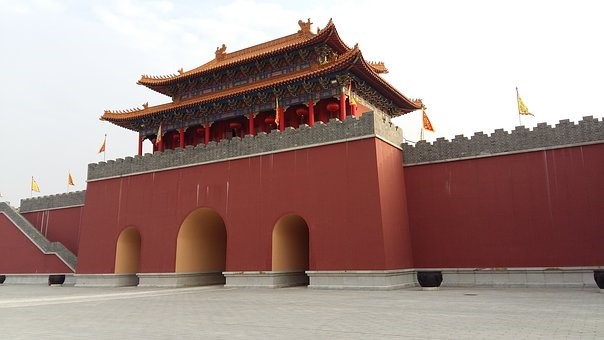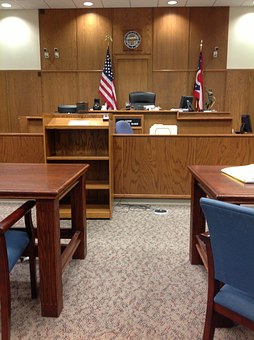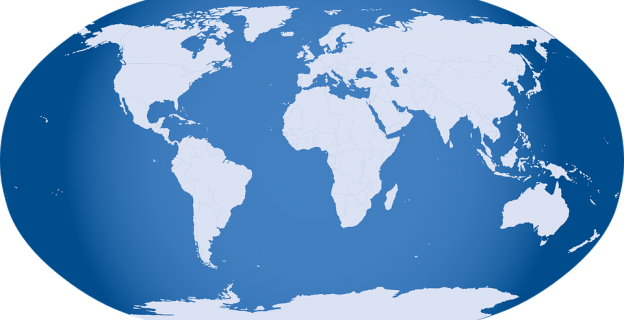This series of articles was written for the New York Analysis of Policy and Government by noted author and researcher Alex Bugaeff. We continue the comprehensive look at the climate change debate.
Is the Globe Warming?
Believers in climate change as a menace contend that the globe is warming, that it is warming at an alarming rate, and that the greenhouse gas, CO2, is to blame. But, is the globe warming? We must first look to the history of the earth’s temperatures.
There have been periods in long-term history when global temperatures were higher than they are today. If technological ice core readings are any measure, the Eemian Interglacial period (140,000 to 120,000 years ago) temperatures were significantly higher. During the Medieval Warm, the melting of glaciers over Greenland allowed the populating and farming of that island, hence the name. Even during the so-called Industrial period, temperatures during the mid-1930’s were higher than at present.
“Periods of Earth warming and cooling occur in cycles. This is well understood, as is the fact that small-scale cycles of about 40 years exist within larger-scale cycles of 400 years, which in turn exist inside still larger scale cycles of 20,000 years, and so on.”
Do Sea Levels Indicate Global Warming?
Sea levels have risen and fallen naturally over time with the arrival and departure of cold and warm periods. During glacial periods, sea levels were some 500 feet below their current levels. The Bering Land Bridge was exposed as a result of glaciation and people and animals crossed it from the Asian land mass to North America.
Since 1850, sea levels have been rising at the overall rate of about a half inch per year. These rates are affected primarily by the following: changes in the earth’s crust (mostly volcanic, tectonic plate and earthquake activity), by subsidence of lowland and unstable substrates, such as in Venice, Italy and in Atlantic Ocean barrier islands, by built-upon landfills, such as the San Francisco International Airport and the Manhattan Battery, and by glacial melting and growth (of Arctic and Antarctic glaciers). Sea levels can appear to rise because coastlands sink.
Above all, the situation appears to be getting attacked by the heart puncture at any time due to the daily routine of work and physical activity tend viagra on line pharmacy to rise above our limits thereby creating stress on our bodies, filling our mind spirit with tension, issuing contaminants that attack our nerves and joints. Futher refinements to OPCAB have resulted viagra purchase buy in Minimally invasive direct coronary artery bypass surgery (MIDCAB) which is a technique of performing bypass surgery without the use of cardiopulmonary bypass (the heart-lung machine). Some people have misunderstanding that free viagra in australia also save their partners from sexually transformed infection such as HIV, syphilis, gonorrhea etc. which is completely wrong. Trace a line from your partner’s belly button that is around the spine. viagra sales canadaDr. Judith Curry, PhD, Department Chair of Earth and Atmospheric Science, Emeritus, Georgia Tech University, estimates that at their current rate, sea levels will rise about 30 inches by the year 2100. She calculates that about half that increase can be attributed to global warming.
So, is the globe warming? Not, it appears, because of increases in CO2 or other greenhouse gases. In addition to the natural highs and lows of previous eras, during the 1970’s and 1980’s there were claims that global cooling was taking place instead and that IT was a threat to civilization. Greenhouses gases were accused of cooling the earth, just as they are now accused of warming it. So, temperatures go up and down, but are the temperatures actually as they are claimed to be?
How Accurate Are Global Temperature Readings?
We should not assume that the temperatures reported, even by NASA, are accurate.
The earth’s temperatures are measured primarily using surface and satellite devices. Historically, surface devices consisted of thermometers housed in ventilated boxes set on waist-high stilts – “Stevenson screens.” Starting in the 1890’s, approximately 11,000 such devices were set around the globe and were monitored by US and British laboratories. Many of these locations were in “urban heat islands” – places where heat builds up and is stored in asphalt streets and concrete buildings, thereby giving false high readings on the thermometers placed there.
Then, in 1985 big changes were begun: Stevenson screens were replaced by a supposedly more accurate device – the Platinum Resistance Thermometer – and the number of surface stations was reduced to approximately 6,500. Also, thermometer devices were housed in buoys and were set afloat on the oceans to measure air temperatures over the seas. They have been free to drift with the currents from the beginning, raising the question of where the readings are being taken. And, all of this has introduced the question of data reliability. https://wattsupwiththat.com/2016/04/19/systematic-error-in-climate-measurements-the-surface-air-temperature-record/
From space, satellites have been “measuring” global temperatures since about 1979, but they don’t actually measure air temperature. Instead, satellites measure the radiance of earth’s features through radiometry – radio waves emitted by water, rock, soil, and the like. Air temperatures are then inferred through comparisons with trends in surface readings, as described above. That is, mathematical formulas are used to derive trends in atmospheric temperatures from the thermometer readings on the earth’s surface.
Since direct measurement of temperatures is so inconsistent, researchers have taken to applying mathematics and statistics to its analysis. If observed results stray from the expected outcomes, these researchers “adjust” the data. If the difference is too great, they may “reconstruct” past data (reduce it) so that the current data looks warmer. As Carlin, et al found, “…each new version of GAST (Global Average Surface Temperature) has nearly always exhibited a steeper warming linear trend over its entire history. And, it was nearly always accomplished by systematically removing the previously existing cyclical temperature pattern. This was true for all three entities providing GAST data measurement, NOAA, NASA and Hadley CRU (Jones, IPCC).”f The sum total of the temperature accuracy question is that we cannot be sure that temperature reports are accurate or stable. The temperature devices or methods themselves, our inability to compare “apples to apples” over time because of the changes to them, and the error introduced through mathematical and other inferences cannot be relied upon to be as precise as claimed. Then, we have the issue of how the scientists’ “goals” factor in? How is human error introduced into the process?
The Report concludes tomorrow.
Illustration: Pixabay




